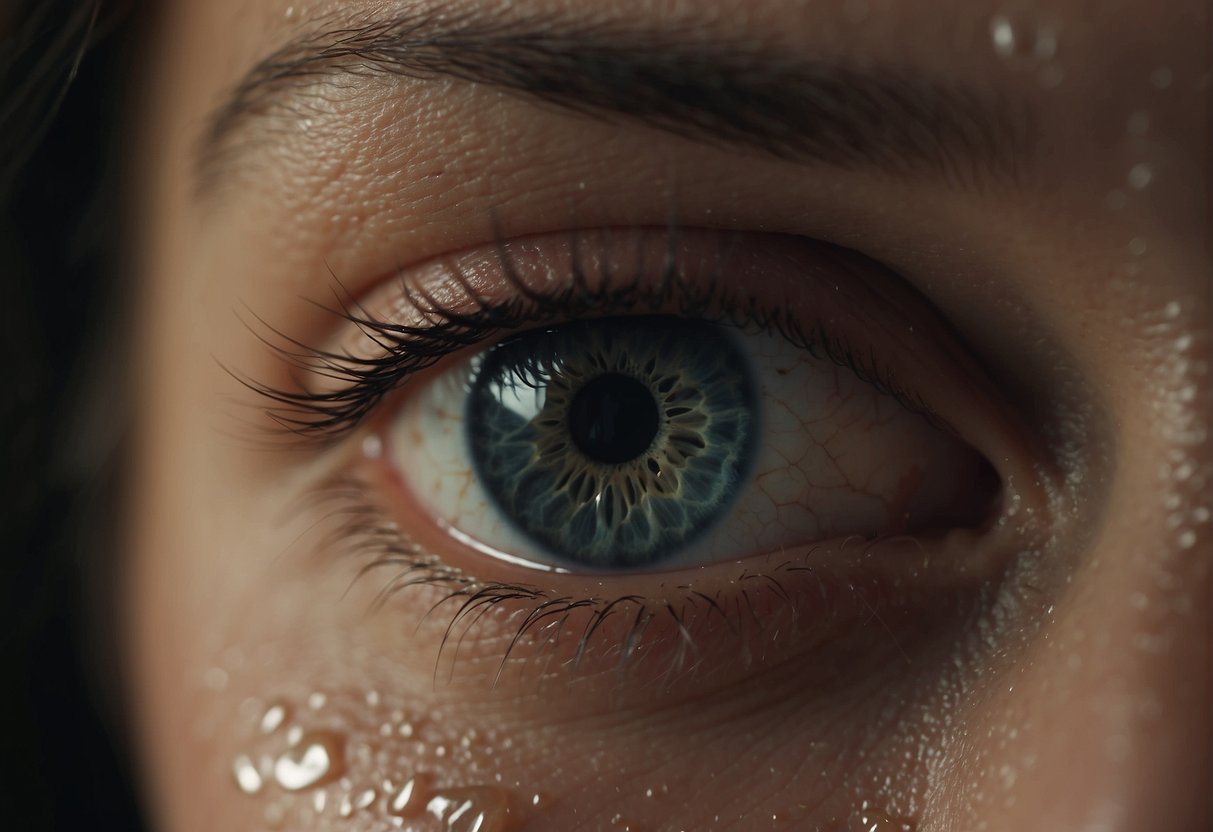📦 FREE Shipping
How Many Calories Does Crying Burn 2024? Surprising Insights

Shed light on the emotional and physical aspects of shedding tears with “How Many Calories Does Crying Burn? Surprising Insights,” examining the caloric impact of letting your emotions flow.
How Many Calories Does Crying Burn?
- Calories & Crying: While you might not set any fitness records, crying does lead to a slight increase in energy expenditure. Emotions can rev up your metabolism, albeit subtly.
- Energy Expenditure: Crying involves the activation of various facial and respiratory muscles, which, yes, consumes energy. The metabolic rate sees a minimal uptick, but it’s energy spent nonetheless.
- Stress Hormones: Stress often triggers crying, and it engages your hormones. Cortisol, the well-known stress hormone, can alter your metabolic rate.
- Mental Health Impact: Emotional tears carry an array of benefits, contributing to mental health by releasing oxytocin and endorphins. These hormones may soothe stress and could slightly affect the basal metabolic rate due to their role in homeostasis.
- Caloric Tale of Tears: An estimate suggests that a single minute of crying burns around 1.3 calories, translating to about 12 calories for an hour-long sob session.
- Emotional Release & Metabolism: Crying can allow you to release emotions, and in addition to the potential for a minuscule calorie burn, your body might reset emotionally, impacting your overall well-being and possibly your long-term metabolic efficiency.
Comparative Analysis of Activities and Calorie Burn
Physical Activities Versus Crying
When it comes to shedding calories, physical activity takes the lead. A brisk walk can burn around 100 calories per mile for a 180-pound individual. Comparatively, crying burns approximately 1.3 calories per minute—far less than even gentle fidgeting or chewing gum. For instance, if you were to replace 20 minutes of sedentary activity like watching TV with gardening, you could burn an extra 200 calories.
- Walking (3 mph): ~3.6 cal/min
- Crying: ~1.3 cal/min
- Gardening: ~10 cal/min
The bottom line: while crying does burn some calories, it’s marginal when compared to deliberate physical movement.
Emotional States and Energy Usage
Your emotional state can subtly alter your metabolism. Stress, for instance, can lead to an increase in heart rate and energy expenditure. The body’s response to intense emotions like rage or grief may momentarily boost the metabolic rate, much like experiencing anxiety or depression can impact appetite and overeating. Crying, as a method of stress relief, has physiological effects, but they are not as calorie-intensive as physical activities.
Lifestyle Factors Influencing Calorie Burn
Your overall lifestyle – from sleep quality to activity level – shapes your basal metabolic rate (BMR). Monitoring daily habits with a fitness tracker can give you insights into how many calories you burn—even shopping or sleeping contributes to your daily caloric burn.
However, maintaining a calorie deficit is more effectively achieved by combining increased physical activity with mindful eating rather than relying on passive or emotional activities to burn significant calories.
- Resting/Sleeping: ~0.9 cal/min
- Shopping: ~2.5 cal/min
- Fitness Activity: Variable, often 7+ cal/min
The Impact of Crying on Holistic Health

Psychological Benefits of Crying
Emotional Release: Crying is an important emotional release. When you feel overwhelmed by emotions, crying can help you de-stress and regain emotional balance.
Importantly, this process can involve the release of endorphins and oxytocin, hormones that are known for their stress-relief qualities and support in emotional well-being.
Support and Mental Health: When you cry, it often encourages support from others, which can be vital for mental health. Sharing your emotions and seeking comfort can lead to a feeling of connection and reduce feelings of isolation.
In addition, expressing emotions through crying can sometimes prompt you to seek out a mental health professional for further support, thus fostering better mental health over time.
Physiological Responses to Crying
Calorie Burn and Tear Production: While crying does expend a small amount of energy, leading to calorie burn, don’t expect it to influence weight loss significantly. Crying burns approximately 1 to 3 calories per minute due to the energy expended in tear production and the intensity of the emotional response.
- Average Caloric Expenditure: About 1 to 3 calories per minute.
- Tear Production: Involves a minor amount of energy expenditure.
Hormonal Effects and Appetite: Crying influences the hormonal landscape in your body. Beyond the release of stress-related hormones, the act may also impact your appetite. Some studies suggest that the emotional intensity and duration of crying can affect hunger and potentially reduce the likelihood of overeating due to emotional stress.
FAQ:
Why does crying burn so many calories?
Crying may burn more calories than resting because it’s a heightened emotional state which slightly increases heart rate and stress hormones.
Does emotional stress burn calories?
Emotional stress can lead to a minor increase in calorie burn due to heightened physiological responses and hormone levels.
Does crying burn more calories than laughing?
Crying does not necessarily burn more calories than laughing; both activities have a similar minor effect on calorie expenditure.
How many calories does a scream burn?
A scream’s no specific calorie count, but like crying or laughing, it may burn a small number of calories due to physical exertion.
If this article about the question, “How Many Calories Does Crying Burn,” helped you, don’t forget to leave us a comment below about what you think of the article.


